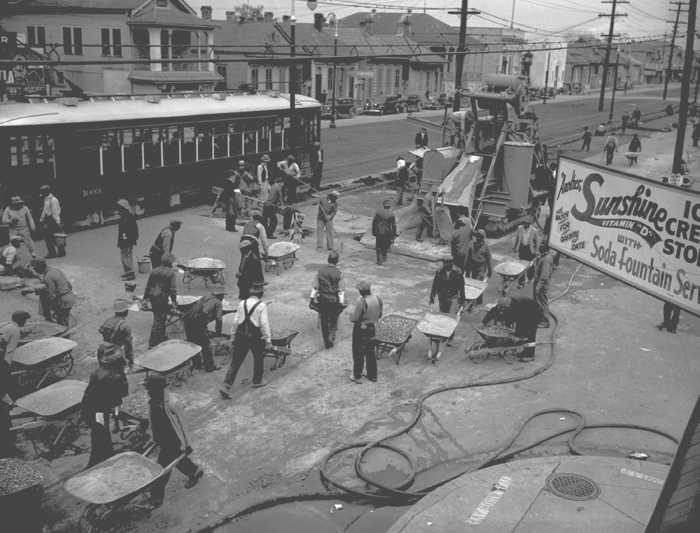The Great Depression was one of the largest troubles throughout most of the 1930s and affected economies worldwide. With Louisiana being a major agricultural state in the South, these economic problems led to the downfall of many farms. Especially those owned by poor whites and poor blacks alike. Prices of goods fell to all-time lows and many farmers couldn't afford to keep their farms. In turn, workers weren't able to get paid or had to settle for even lower wages at plantations or at other jobs. It was bad enough that many families in rural Louisiana already lived in poverty. The Great Depression made it far worse. As had the drought of 1930-1931 where many families had to apply to get aid from the American Red Cross. More on this can be read at https://64parishes.org/entry/great-depression-in-louisiana
A poem by Langston Hughes, Let America Be America Again, was written during the time of the Great Depression. In it is a section that is an expression of how many citizens felt at the time. Especially in the Southern States where many working-class citizens were affected. Most of us have not learned about the details of this shared history but it was immigrants, more recent descendants of immigrants, descendants of slaves, Native Americans, and owners of small farms who were mainly affected. This while larger farms (wealthy plantations) in the South thrived due to the cheaper labor and other factors. They proudly took advantage of the economic troubles to the detriment of nearly everyone else. See: Were there successful farming plantations during the Great Depression?
"I am the poor white, fooled and pushed apart,
I am the Negro bearing slavery’s scars.
I am the red man driven from the land,
I am the immigrant clutching the hope I seek--
And finding only the same old stupid plan
Of dog eat dog, of mighty crush the weak."
Those who were just scraping by before the Great Depression, many of them felt the brunt of the blow of economic troubles. Yet they persevered. Many of these photos display the strong character of those days and of the past. Which was not only a trait of Louisiana but also of Americans from other states and walks of life during the Great Depression.
Florestine Carson, unemployed Creole Negro trapper, and daughter, Plaquemines Parish, Louisiana.
By Ben Shahn (FSA photo by Ben Shahn via [1]) [Public domain], via Wikimedia Commons
By Ben Shahn (FSA photo by Ben Shahn via [1]) [Public domain], via Wikimedia Commons
Citizenship Class in the Hungarian Settlement in Livingston Parish Louisiana - Albany, Louisiana
By Uncredited photographer for the WPA (Works Progress Administration photo via [1]) [Public domain], via Wikimedia Commons
By Uncredited photographer for the WPA (Works Progress Administration photo via [1]) [Public domain], via Wikimedia Commons

1936; Works Progress Administration night school for African Americans in the town of Kenner, Jefferson Parish
By Uncredited WPA photographer (Works Progress Administration photo, via [1]) [Public domain], via Wikimedia Commons
"Negro school, Destrehan, Louisiana", September 1938
Russell Lee [Public domain], via Wikimedia Commons
Russell Lee [Public domain], via Wikimedia Commons
Musicians playing accordion and washboard in front of a store, near New Iberia, Louisiana. November 1938
Russell Lee [Public domain], via Wikimedia Commons
Russell Lee [Public domain], via Wikimedia Commons
WPA work repaving and widening on St. Claude Avenue, view at the corner of Mandeville Street, with St. Claude
By Uncredited Works Progress Administration photographer (WPA photo via [1]) [Public domain], via Wikimedia Commons
By Uncredited Works Progress Administration photographer (WPA photo via [1]) [Public domain], via Wikimedia Commons
New Roads Louisiana in 1938. Looking across the railroad tracks into the African American section of New Roads, Louisiana. Store sign reads: Felix Fazenda Fine Wines and Liquors. Morning Treat. Signs also for Jax beer, RC Cola, and the Cresent Saloon.
Russell Lee [Public domain], via Wikimedia Commons
Russell Lee [Public domain], via Wikimedia Commons

An image of musician Cléoma Breaux with her husband Joe Falcon
See page for author [Public domain], via Wikimedia Commons

African American musicians playing guitars on St. Joseph's Day Night,St. Joseph's Day is the traditional post-Mardi Gras last gathering of the season for the "Mardi Gras Indians" organizations.
By Unnamed WPA photographer (WPA photo via [1]) [Public domain], via Wikimedia Commons

Young woman with umbrella, Louisiana, July 1937
Dorothea Lange [Public domain], via Wikimedia Commons

Men standing on the sidewalk outside Federal Emergency Relief Administration office. October 1935
Location seems to be S. Claiborne Avenue between Washington Avenue and 4th Street, on the lakewards side of the street.
By Ben Shahn [Public domain], via Wikimedia Commons

Spiritual meeting at Father Treadwell's Church in New Orleans Louisiana in the 1930s. Church of God in Christ. Rev. Lucien H. Treadwell, Pastor.
By Unnamed WPA photographer (Works Progress Administration photograph via [1]) [Public domain], via Wikimedia Commons

Three Creole Girls, Plaquemines Parish, Louisiana, October 1935
By Ben Shahn [Public domain], via Wikimedia Commons

Men talking on a porch of a small store near Jeanerette, Louisiana. October 1938. Iberia Parish, Louisiana
Russell Lee [Public domain], via Wikimedia Commons

Drinking at beer the bar, Raceland, Louisiana. September 1938
Russell Lee [Public domain], via Wikimedia Commons

Two boys leaning on fence watching parade, state fair, Donaldsonville, Louisiana, November 1938
Russell Lee [Public domain], via Wikimedia Commons
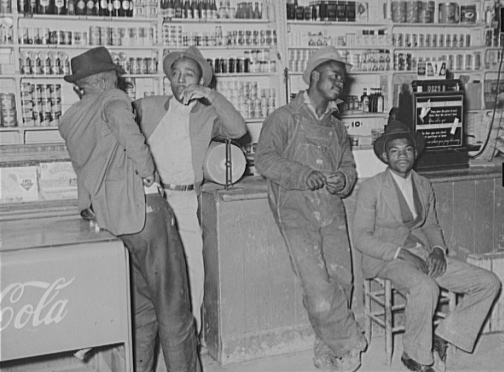
Men in cooperative general store. Transylvania, Louisiana, January 1939
Russell Lee [Public domain], via Wikimedia Commons

Mother teaching children numbers and alphabet in the home of a sharecropper. Transylvania, Louisiana. January 1939
Russell Lee [Public domain], via Wikimedia Commons

New Orleans Mardi Gras, 1936. 3 street costumers dressed as clowns.
By Unnamed WPA photographer (WPA photo via [1]) [Public domain], via Wikimedia Commons
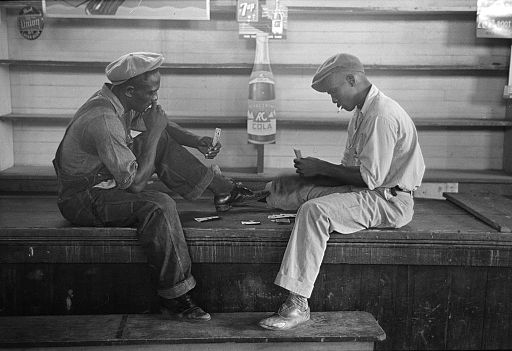
2 African American men sitting playing Conquian (card game), September 1938.
Russell Lee [Public domain], via Wikimedia Commons
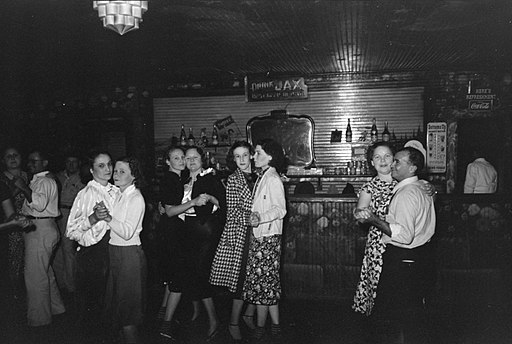
Dancing at bar in Raceland, Louisiana, September 1938.
Russell Lee [Public domain], via Wikimedia Commons
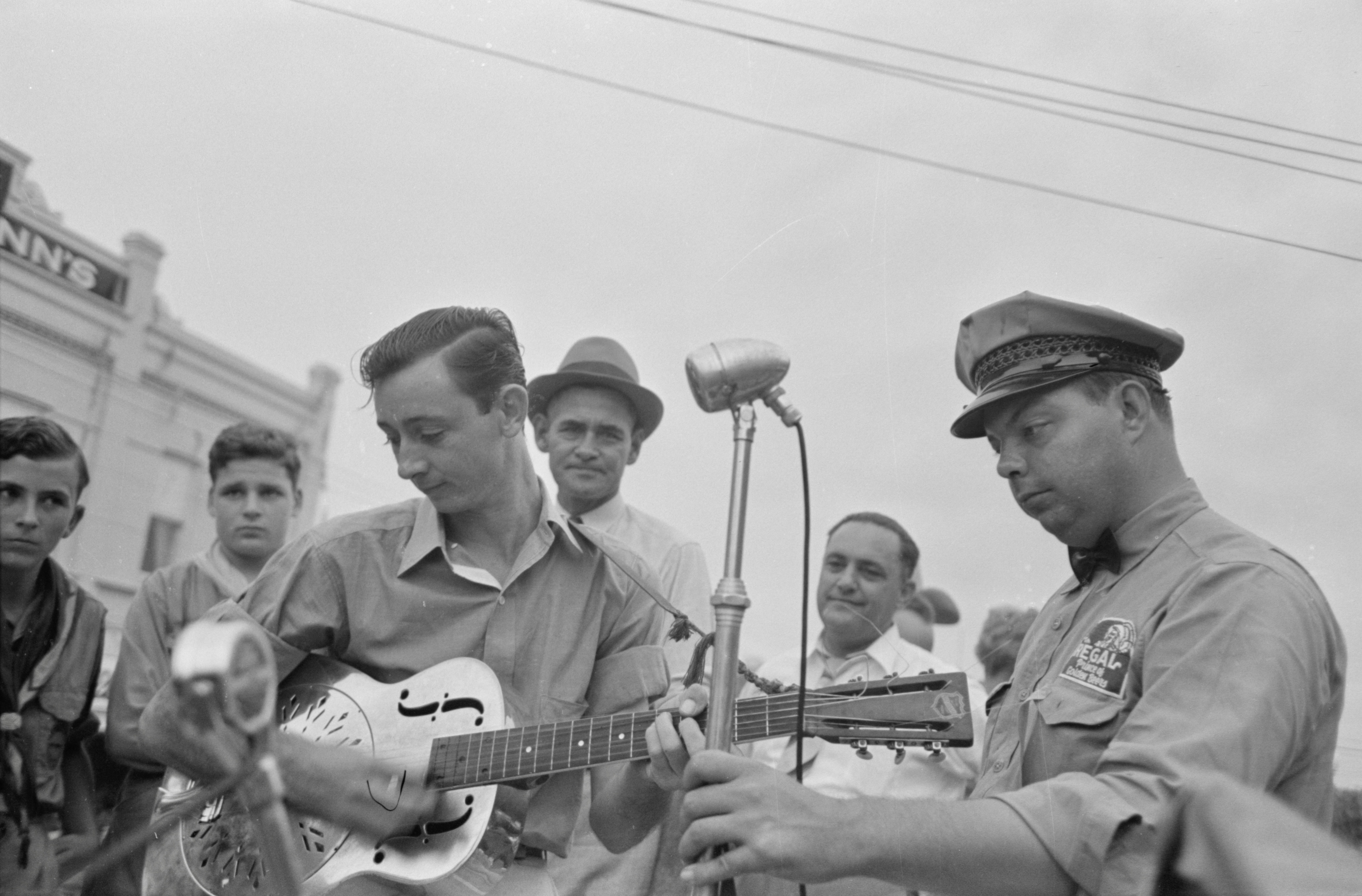
Steel guitarist at microphone, Cajun band contest, National Rice Festival, Crowley Louisiana, October 1938
Russell Lee [Public domain], via Wikimedia Commons
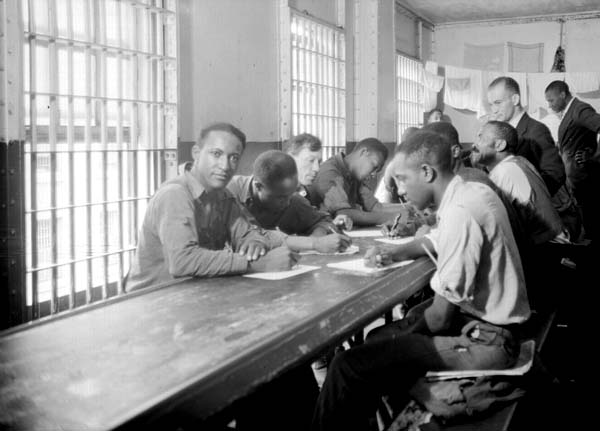
Literacy class at the Parish Prison, New Orleans. February 16, 1937
By Uncredited WPA photographer (WPA photo via [1] # 17.33) [Public domain], via Wikimedia Commons

Photograph of WPA Education — Radio Class, Magnolia School, 2246 Carondelet Street, New Orleans. January 18, 1937
By Works Progress Administration [Public domain], via Wikimedia Commons
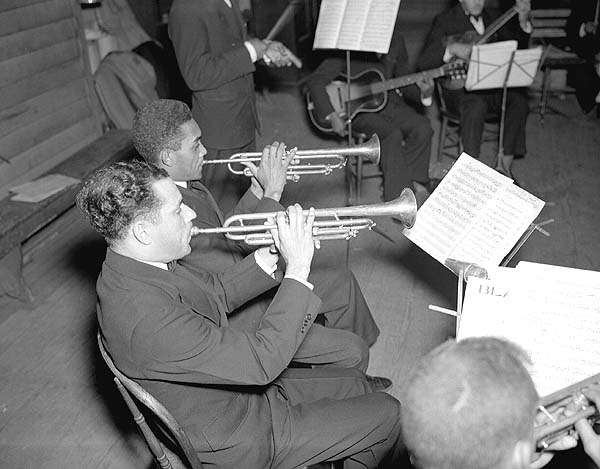
Trumpet players with WPA band, New Orleans, November 30, 1937
By Uncredited photographer for the Works Progress Administration, a U.S. Federal Government agency. [Public domain], via Wikimedia Commons
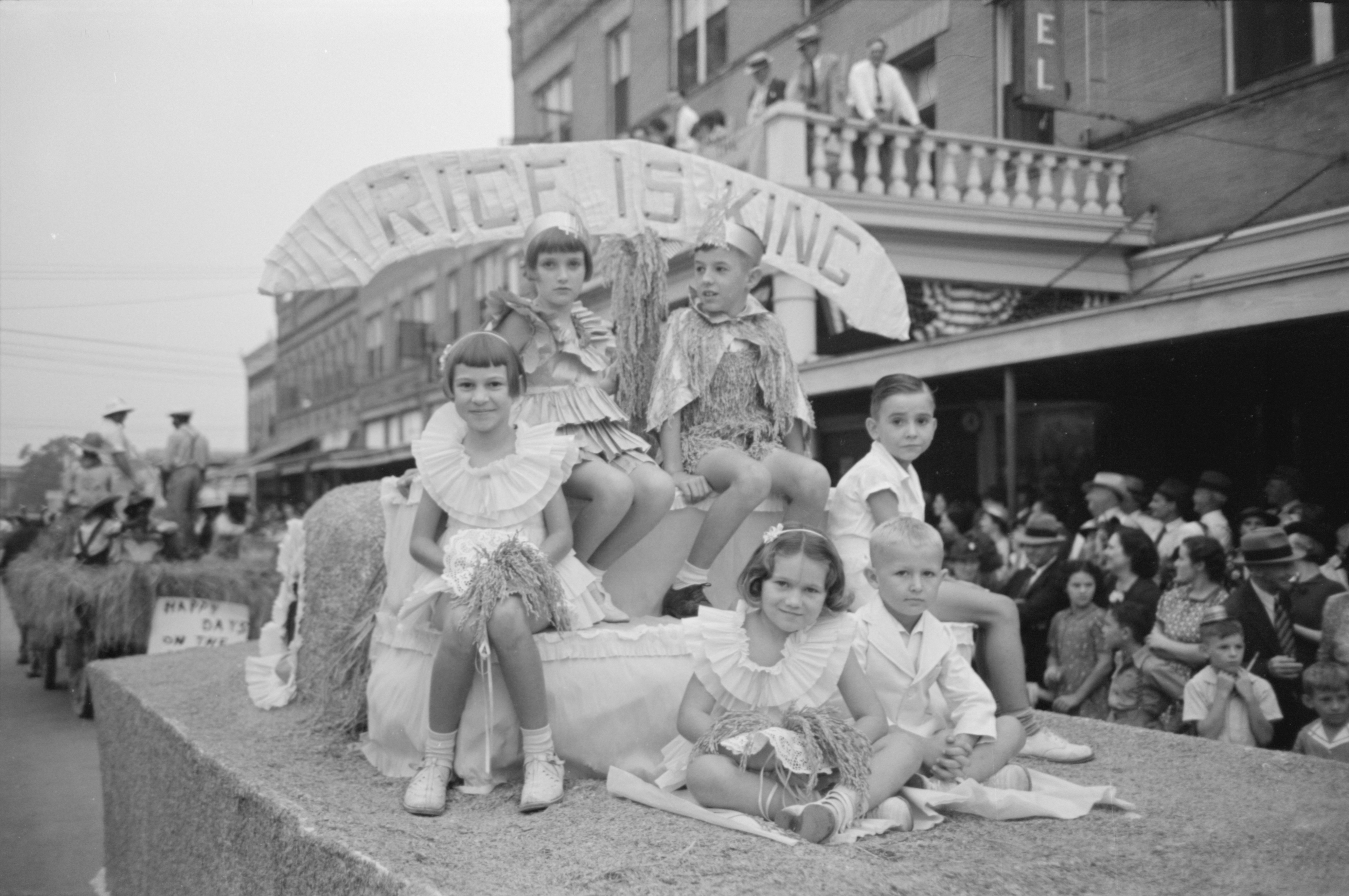
Children on parade float with the inscription "Rice Is King", National Rice Festival, Crowley, Louisiana., October 1938.
By Russell Lee [Public domain], via Wikimedia Commons

Musicians in Cajun band contest, National Rice Festival, Crowley, Louisiana. October 1938
By Russell Lee [Public domain], via Wikimedia Commons
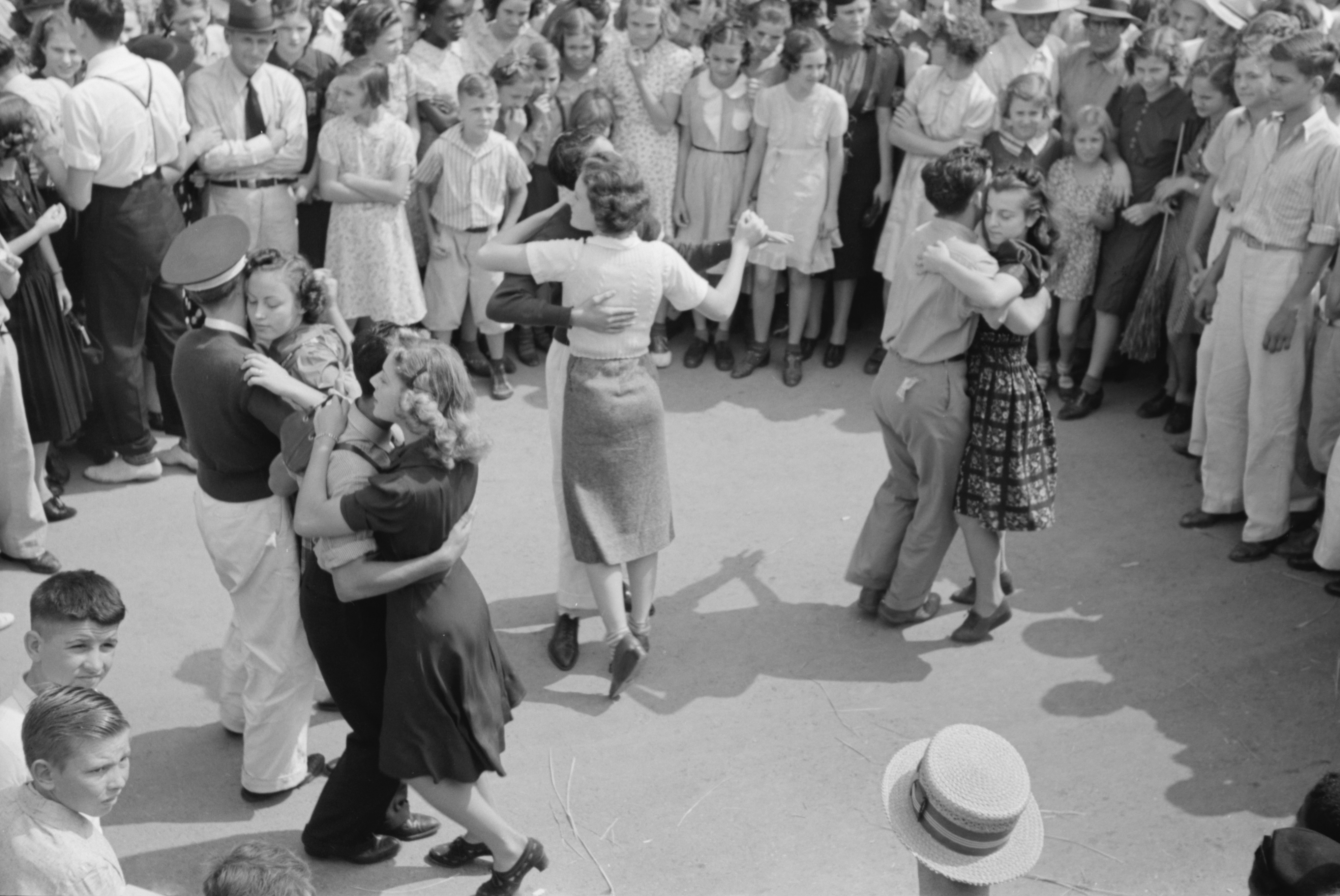
Street dancing, National Rice Festival, Crowley Louisiana, October 1938
Russell Lee [Public domain], via Wikimedia Commons

A store with live fish for sale, vicinity of Natchitoches, Louisiana. 1939
By Wolcott, Marion Post, 1910-1990, photographer [Public domain], via Wikimedia Commons

Title: A cross roads store, bar, "juke joint," and gas station in the cotton plantation area, Melrose, Louisiana. 1939
By Wolcott, Marion Post, 1910-1990, photographer [Public domain], via Wikimedia Commons





